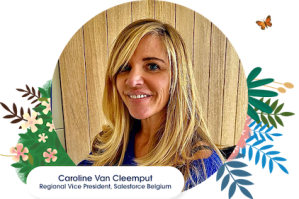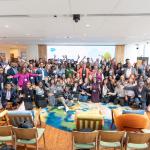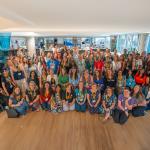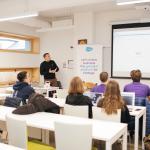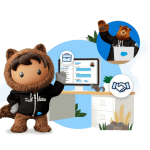As organisations across the globe struggle to fill headcounts, workplace diversity has become a key differentiator in talent acquisition. According to a Glassdoor Survey from 2020, 76% of job seekers and employees report that “a diverse workforce is an important factor when evaluating companies and job offers”.
In this blog, we look at some of the steps organisations can take to improve workplace diversity and attract more skilled employees.
Boost talent acquisition with a more diverse workforce
Over the last few years, diversity and inclusion have moved up the agenda. More organisations are recognising that with a diverse workforce, they can attract greater talent, be more innovative, and increase profitability. In fact, an analysis from McKinsey in 2019 found that “companies in the top quartile for gender diversity on executive teams were 25% more likely to have above-average profitability than companies in the fourth quartile.”
With such a competitive recruitment market, workplace diversity could be the key to enhancing talent acquisition. Prioritising diversity and inclusion will help you tap into more potential candidates and make your organisation more attractive to those who apply.
Diversity is not just about employing a workforce with a range of backgrounds, ages, experiences, disabilities, faiths, and gender identities, but also ensuring everyone feels valued, engaged, and able to be themselves.
“It’s important to recognise that everyone has something different to add to the team,” explains Caroline Van Cleemput, Regional Vice President at Salesforce Belgium. “It’s common to take a profile of a successful employee and look for clones, but it’s the differences between individuals that give a team its strength. You need a variety of backgrounds and experiences, so people can teach and inspire each other.”
How workplace diversity attracts greater talent
Responsible for a sales team with a 50/50 ratio between men and women and people from various backgrounds, Van Cleemput truly understands the benefits of diversity.
“No two sales deals or clients are the same, so a combination of different views and approaches maximises your probability of success,” Van Cleemput explains. “I worked in cybersecurity, a male-dominated industry, for 15 years. Coming to Salesforce was a breath of fresh air as the company has been intentional about creating a culture of diversity and inclusion.”
Putting equality at the forefront has not only helped the company attract and retain exceptionally talented employees but also encouraged every employee to do their best. “Working as part of a diverse team gives you the opportunity to engage with and learn from other people, and their lived experiences, in ways that you might not have, otherwise,” adds Van Cleemput.
Building a diverse team, however, is not always easy. Firstly, you need a wide range of people applying for roles. Below, we outline five steps organisations can take to appeal to more diverse candidates and improve their talent acquisition.
1. Expand where you look for talent
To open up the recruiting process to a wider audience, you need to think outside the box. “Not everyone has a typical career path, and nor should they have to,” says Van Cleemput. “Be open to candidates with different kinds of experience who can bring fresh ideas to the table.”
For example, Salesforce works closely with MolenGeek to train and recruit staff. Based in the Molenbeek-Saint-Jean district in Brussels, which has up to 40% youth unemployment, MolenGeek aims to make digital accessible to anyone with courses in Salesforce Administration as well as other topics.
2. Rethink your ad content and language
Job ads and interviews that lead with a barrage of technical skill requirements will only attract candidates with specific experiences. “Every technology is different and will require some on-the-job learning anyway, so is a technical background really a prerequisite?” says Van Cleemput. “And is the ability to work with a particular piece of software more important than good soft skills? Many of my team don’t have technical backgrounds, but have quickly picked it up to the level that’s required in their job role – not everybody needs in-depth technical skills.”
Language also plays a role in attracting talent in a more subtle way. Gender coding means that some languages will appeal more to men and other languages to women, so it’s important to be aware of this and phrase your ads carefully. Use an online gender decoder to help.
3. Implement an inclusive interview process
The way you run the interview process can really change its outcomes. At Salesforce, anyone interviewing internal or external candidates must have completed our Inclusive Hiring training and received an Interviewer Certification. This programme includes bias training and enablement on inclusive hiring practices made mandatory for hiring managers and recruiters. Over 40,000 employees have participated in the hiring certification programme to date.
Additionally, we include people from various roles in the interview panel to ask different questions and help uncover the candidate’s passions. A diverse interview panel can also help identify whether the candidate is better suited to a different role.
“Even if your interviewee isn’t the right fit for that specific role, they might be well-suited to another team,” advises Van Cleemput. “Keep an open mind, and look at their potential as much as their experience.”
4. Support employees from underrepresented communities
Mentorship programmes are a great way to support employees from underrepresented communities on their career journeys. “At Salesforce, we have a buddy programme where every new hire is assigned two mentors that they can contact at any time to answer questions, share experiences, or provide coaching to help them on their career path,” explains Van Cleemput. “Combined with our boot camp and Trailhead courses, it helps everyone feel welcome and set up for success.”
One way we create a culture of community and inclusion within Salesforce is through our 12 Equality Groups or employee resource groups. Our Equality Groups are employee-led organisations that support our underrepresented communities.
For example, the women’s network at Salesforce is one of the company’s equality groups, which takes on gender inequality and helps boost professional and personal development. “We work across the Salesforce ecosystem of partners and customers, and the wider community, to help women achieve their potential,” explains Van Cleemput. “It’s part of our mission as a company to use business as a platform for change.”
5. Accelerate cultural change with policies that promote equality
Finally, successfully achieving a diverse workforce comes down to an organisation’s key values and culture. For example, having representation from women and underrepresented backgrounds in leadership roles, committing to equal pay, and implementing initiatives with equality at the centre can all contribute to a culture that values diversity and inclusion.
By taking these steps, Van Cleemput has achieved her goal – acquiring the diverse talent she needs for an innovative and extremely successful team – and other teams across Salesforce are rapidly following her example.
Find out more about working at Salesforce and how we’re achieving more with a diverse workforce.
